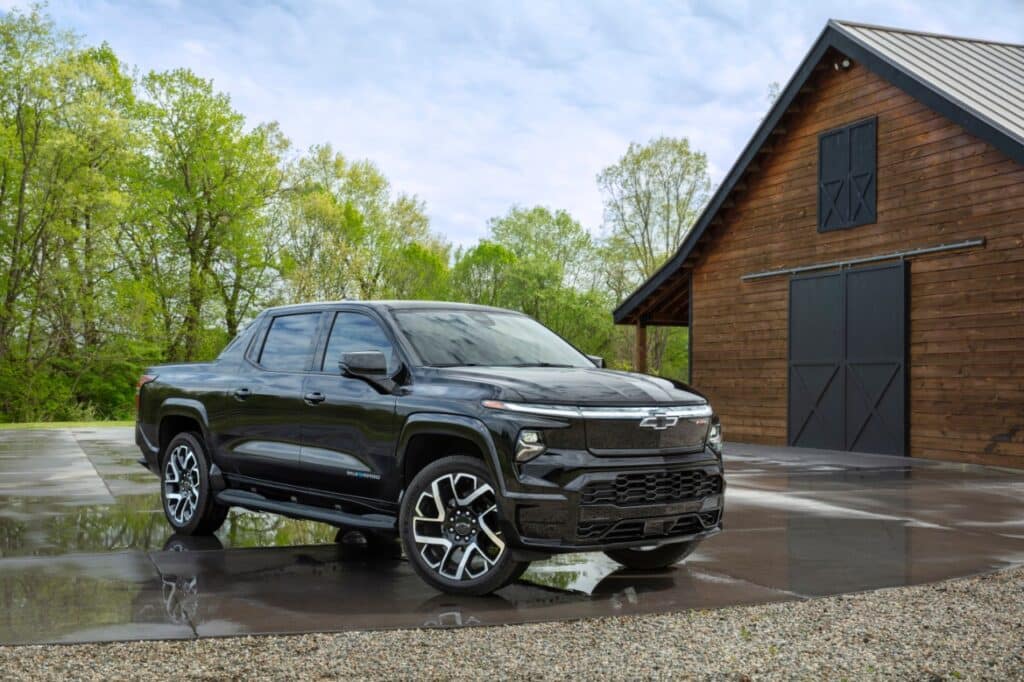Cheaper LFP Batteries Coming to Chevy Silverado EV, New Chevy Bolt
While most traditional automakers are still finding their footing in the electric vehicle (EV) race, General Motors might just have figured out the real game-changer: owning the battery game from the inside out.
A deep dive by Bloomberg Businessweek reveals how GM’s bold approach to battery production—designing and manufacturing its own standardized battery cells and modules in-house—is starting to pay off. After a rocky 2023, GM has smoothed out supply issues and is finally ramping up production while driving down costs. That’s helping push its EV lineup toward profitability, as vertical integration, especially for batteries, is key to cost reduction in EV production. In February, we reported that GM CEO Mary Barra described GM’s EV segment as “variable profit positive.”
But this is just phase one. Now GM is gearing up to take things even further by embracing lithium-iron phosphate (LFP) battery chemistry. If you’re not deep into battery science, here’s the bottom line: LFP batteries are cheaper to produce and more stable, though they sacrifice a bit of range. And that’s okay—because what they lose in miles, they make up for in affordability.
Here’s where things get exciting: GM plans to use LFP batteries in two upcoming models—the Chevrolet Silverado EV and the next-gen Bolt EUV. According to GM battery chief Kurt Kelty, the LFP-powered Silverado EV will offer around 350 miles of range (down from the top-spec version’s 492 miles), but it will also be $6,000 cheaper. That could bring pricing closer to gas-powered Silverado territory, where models often start in the $40K–$50K range. And let’s be real: a 350-mile range is more than enough for most drivers.

For context, the current Silverado EV Work Truck (WT) starts at $55,000, while the retail version is a steep $73,100. A more affordable, long-range version would be a major win.
As for the new Bolt? Details are scarce, aside from a mention of a “sporty-looking” concept dubbed the Funbolt. But it’s safe to assume GM is going for a comeback story—one that centers on lower costs and broader appeal.
LFP batteries are becoming the go-to for automakers looking to make EVs more accessible. LFP is used by some Ford Mustang Mach-E trims, China’s BYD, and other emerging EV players. GM joining the ranks isn’t surprising—it’s necessary.
Last year, GM even confirmed it would retire its “Ultium” branding as it pivots to offering multiple battery configurations, including LFP. Kelty says switching to these new packs could slash module complexity by up to 75%, making production faster and cheaper. That, in theory, should save GM—and consumers—around $6,000 per vehicle.
If GM can pull this off, this could be the moment where EVs finally go mainstream into mass adoption without the sticker shock.
EVinfo.net’s Take
GM continues to lead the American EV sector, with the largest selection of EVs across its Chevrolet, GMC, Cadillac, and Brightdrop brands.
General Motors announced its astounding first quarter sales results on April 1, 2025, with some surprising news for the EV industry, that its first quarter sales of electric vehicles in the United States rose a whopping 94% compared to the same period last year.
Who will win the new number one EV seller in America crown? Right now, GM, Hyundai, Ford and others are vying for the winning position. With the current number one seller’s sales numbers dropping fast, this accelerates the climb of these rivals.
China’s BYD showed the world how cheap, quality EVs can be produced in massive numbers and create an exciting global EV revolution. Now, it’s America’s turn. GM and others who follow BYD’s example will succeed. Vertical integration, which is an OEM making the majority of the vehicle’s components themselves, is one way BYD won. GM’s domestic battery production will be a key part of its winning vertical integration strategy.
The cost savings from LFP batteries and their rising popularity is another example of how EVs are far superior to gas-powered vehicles. EV innovations like LFP keep coming fast and furious, lowering costs, reducing charging time, while extending range. All of these factors, along with the continued growth of EV charging thanks to bold companies like XLR8 America and IONNA, are ensuring mass EV adoption comes to America sooner rather than later.

Electric Vehicle Marketing Consultant, Writer and Editor. Publisher EVinfo.net.
Services